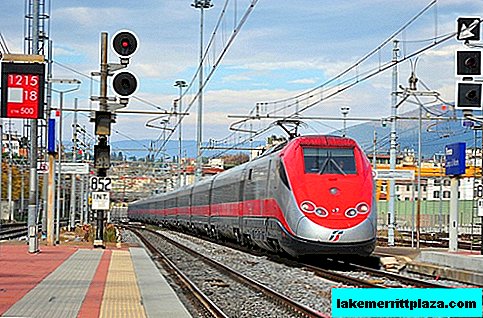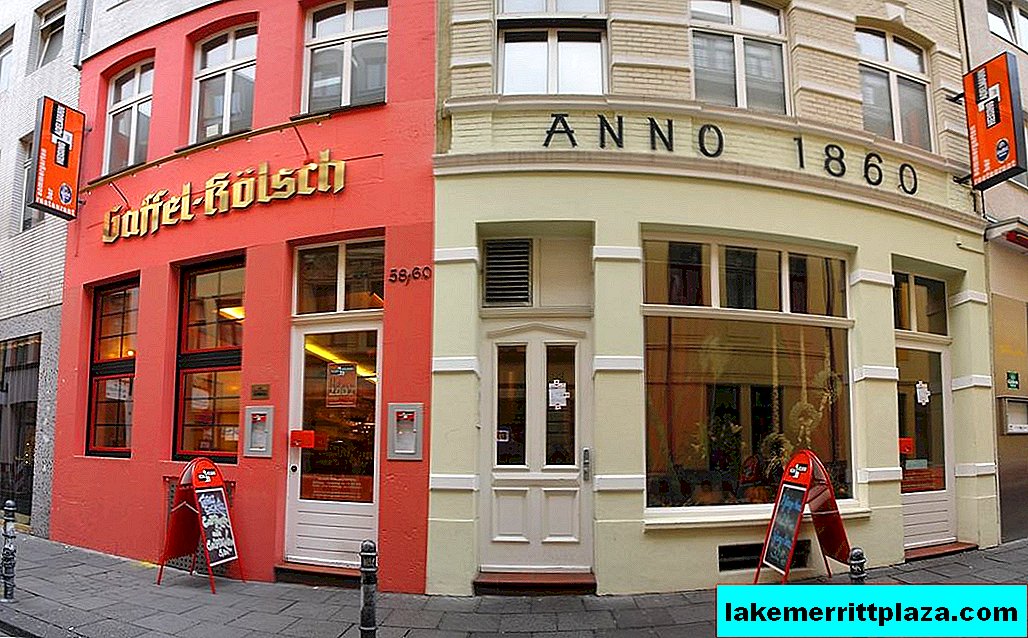Cecilienhof Palace - stylized as an English-style rural house, the last residence of the royal Hohenzollern dynasty. It became the venue for the Potsdam Conference to address issues of the post-war world. For those keen on history, this place is definitely interesting.

Cecilienhof Palace, photo by Marcela
Cecilienhof Palace (Cecilienhof) was built in Potsdam, the northern part of the New Garden (Neuer Garten), not far from Lake Jungfernsee Wilhelm II for his son, Crown Prince Wilhelm and his wife Cecilia Mecklenburg-Schwerinsky.
The building is stylized as an English medieval manor. It is made of brick with half-timbered details made of dark oak. Outside, the building does not resemble the royal palace, only the coat of arms above the entrance, and some signs on the chimneys.
Last Hohenzollern residence

The key elements of the appearance are brickwork and half-timbered details, photo by draisdorf
In 1917, the architect Schulze-Naumburg completed construction. Prince William brought his Cecilia here and gave the palace her name. It was the last palace built during the reign of the Hohenzollern dynasty and the last place they lived. In 1918, the Kaiser abdicated. In 1926, Cecilienhof passed into the private ownership of Wilhelm and Cecilia, where they lived until 1945. Then the palace was nationalized.
Potsdam Conference

The Great Hall, where the meetings of the Potsdam Conference were held, photo by IzabelaWinter
But the Potsdam Conference, which was held from July 17 to August 2, 1945, brought true fame to this palace. It was attended by leaders of the victorious countries - Stalin, Churchill and Truman., and where the issues of the post-war structure of Europe were resolved. It was from here that Truman gave the telephone order for the atomic bombing of Japanese cities.
The conference was held in the Great Hall of the palace, which was previously a living room with wooden finishes and cozy furniture. The hall occupies two floors. A carved oak staircase donated by the city of Danzig leads to the Crown Prince’s chambers. For the conference at the furniture factory "Lux" in Moscow, specially made a round table with a diameter of 3.05 meters. The large hall was left intact.
About the palace

Hotel, photo by Bill Cumming
Cecilienhof after the Potsdam Conference was opened to the public. The palace has 176 rooms. In the west wing is a luxury hotel. In the remaining rooms there is a museum dedicated to the memorable events of 1945, and a museum where the modest and elegant interiors of the former private chambers of the Crown Prince and his wife are demonstrated. In the main building on the 1st floor there are representative living quarters, on the 2nd floor there are bedrooms and bathrooms.





The buildings of the complex are grouped around 5 courtyards: a large front door, a small garden and 3 household.

Soviet soldiers scribbled a star, photo frisch_wasser_tal
The front yard is decorated with a flower bed with a five-pointed star. It was made by Soviet soldiers in preparation for the conference. Until now, it is supported in the same form.

Pipes, photo by maria dixon
An interesting point: 55 pipes rise above the roof of the palace, some of which are real, and some are decorative, but not one of the pipes is like the other.
Working hours
November-March: VT-Sun 10:00 - 17:00;
April-October: VT_BC 10:00 - 18:00;
Mon day off.
Tickets
To the palace:
full ticket - 8;
preferential - € 6.
Crown Prince Apartments:
full - € 4;
preferential - € 3.
How to get there
Take tram 92, 96 to the Reiterweg / Alleestrasse stop, then take bus 603 or
by tram 93 to the Glienicker Brücke stop, then on foot.








